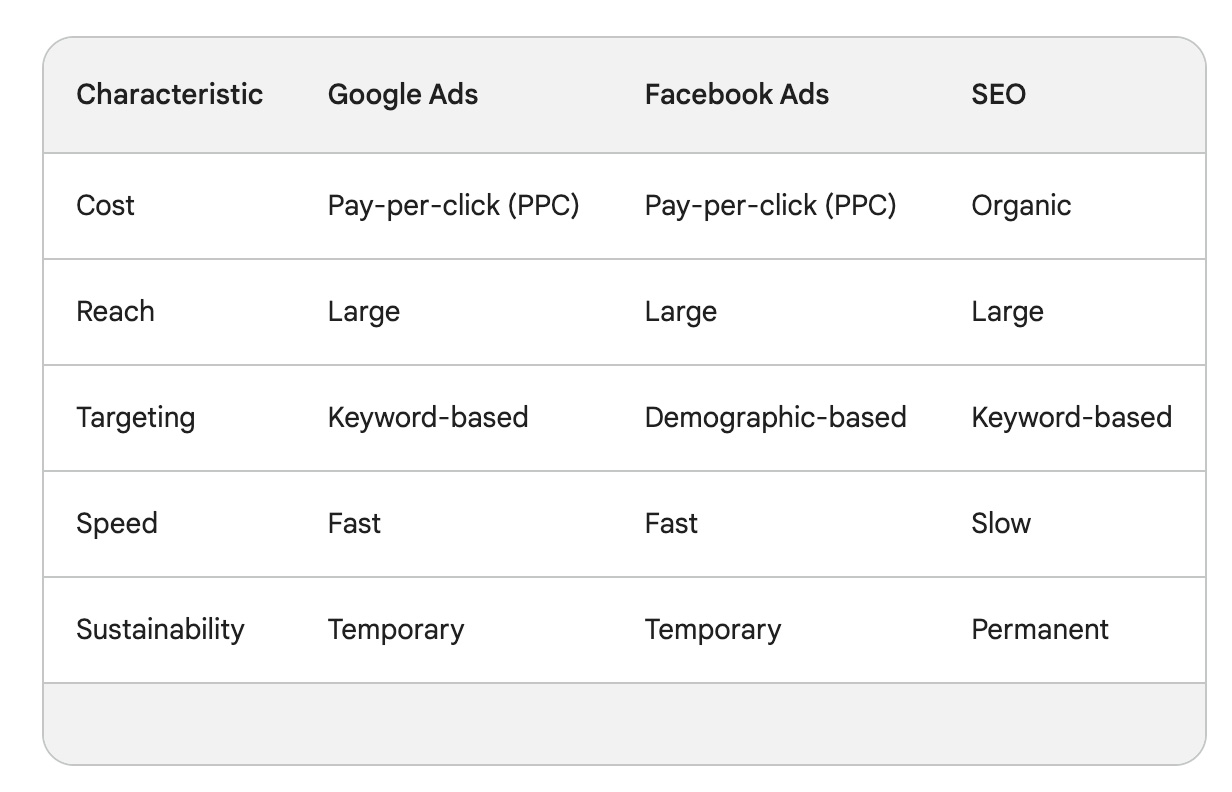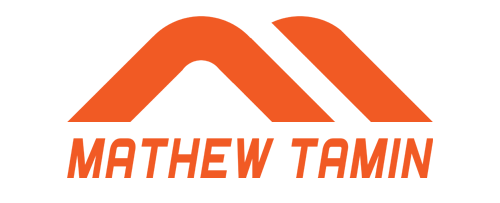
How to Create a Digital Marketing Budget for Your Website
If you're a business owner or marketer, you know that having a digital marketing budget is essential. But with so many different channels and platforms to choose from, it can be tough to know where to allocate your resources.
In this blog post, we'll share our top tips for spending your digital marketing budget wisely and getting the most out of your campaigns. We'll cover everything from setting clear goals to choosing the right marketing channels to creating effective ad copy.
Whether you're a beginner or a seasoned marketer, this blog post has something for you. So, if you're ready to learn how to spend your digital marketing budget wisely and get a 5% conversion rate or even higher, keep reading!
Here are some of the key things we'll cover in this post:
- How to set clear goals for your digital marketing campaigns
- How to choose the right marketing channels for your business
- How to create effective ad copy that converts
- How to track your results and optimize your campaigns
- What is customer acquisition?
- How to break down your budget between different marketing channels
- How to create a 30-day plan for spending your money
- Mistakes to avoid
What is Customer Acquisition
Customer acquisition refers to the process of attracting and converting new customers to your business. It plays a pivotal role in your marketing budget because the cost of acquiring a new customer directly affects your overall marketing expenses. Here's an example:
Example:
Suppose your business spends $5000 on various marketing channels, and as a result, you acquire 100 new customers. The cost of customer acquisition in this case would be $5000 / 100 customers = $50 per customer.
How Customer Acquisition Affects Your Marketing Budget
The cost of acquiring a new customer will affect your marketing budget. If it costs a lot to acquire a new customer, you will need to spend more money on marketing. However, if it is relatively inexpensive to acquire a new customer, you will be able to spend less money on marketing.
Marketing Channels
There are a variety of marketing channels that you can use to reach your target audience. Some of the most popular marketing channels include:
- Search engine optimization (SEO)
- Pay-per-click (PPC) advertising
- Social media marketing
- Content marketing
-
Email marketing
Budget Breakdown
Here is a recommended budget breakdown for a business with a $5000 marketing budget:
- Google Ads: $2,000 (40%)
- Facebook Ads: $1,500 (30%)
-
SEO (Search Engine Optimization): $1,500 (30%)
Explanation of Allocation:
Google Ads (40%):
-
Immediate Visibility: Google Ads provide immediate visibility to high-intent users actively searching for your products or services.
-
Conversion Focus: A significant allocation here can capture users with strong purchase intent.
- Versatility: Google Ads offer various ad formats, including text, display, and video.
Facebook Ads (30%):
-
Audience Engagement: Facebook Ads excel at reaching a broader audience and fostering engagement.
-
Visual Appeal: Facebook's multimedia options are ideal for visually appealing products and brand promotion.
-
Precise Targeting: The platform allows detailed targeting based on demographics, interests, and behaviors.
SEO (30%):
- Long-Term Growth: SEO is a long-term strategy that, when done right, leads to consistent organic traffic and credibility.
- Cost-Efficiency: As your SEO improves, you'll rely less on paid advertising.
- Credibility: High organic rankings enhance your website's trustworthiness.
Recommendation
I recommend using Google Ads and Facebook Ads because they are the most effective ways to reach your target audience and drive traffic to your website. Google Ads is more effective for reaching people who are already searching for what you have to offer, while Facebook Ads is more effective for reaching people who are not actively searching for what you have to offer.
30-Day Plan Breakdown
Week 1:
-
Google Ads: $500 (25% of Google Ads budget)
- Set up Google Ads account.
- Conduct keyword research.
- Create text ads targeting high-intent keywords.
-
Facebook Ads: $375 (25% of Facebook Ads budget)
- Set up Facebook Ads account.
- Define target audience.
- Create engaging image and carousel ads.
-
SEO: $300 (20% of SEO budget)
- On-page SEO optimization (meta tags, content improvements).
- Begin backlink outreach for link-building.
Weeks 2-4:
-
Google Ads: $1,250 (62.5% of Google Ads budget)
- Optimize ad copy and landing pages based on initial data.
- Implement ad extensions.
- Expand keyword list and negative keywords.
-
Facebook Ads: $938 (62.5% of Facebook Ads budget)
- Analyze ad performance and optimize targeting.
- Run A/B tests on ad creatives.
- Begin retargeting campaigns.
-
SEO: $600 (40% of SEO budget)
- Continue on-page and technical SEO improvements.
- Focus on high-quality link-building efforts.
- Regularly update and optimize content.
Average Cost Per Click (CPC)
The average CPC for Google Ads is $0.50 - $2.00. The average CPC for Facebook Ads is $0.25 - $1.00.
Types of Ads
There are a variety of different types of ads that you can run on Google Ads and Facebook Ads. Some of the most popular types of ads include:
- Search ads
- Display ads
- Video ads
- Carousel ads
- Collection ads
Recommendations
I recommend running search ads on Google Ads and video ads on Facebook Ads. Search ads are the most effective way to reach people who are already searching for what you have to offer, while video ads are a great way to engage and inform potential customers.
Keywords Strategy
When choosing keywords for your Google Ads campaigns, it is important to use a mix of broad keywords and long-tail keywords. Broad keywords are more competitive, but they can reach a wider audience. Long-tail keywords are less competitive, but they can be more targeted.
To increase your conversion and click-through rates, you should use relevant keywords in your ad copy and landing pages. You should also use negative keywords to prevent your ads from showing for irrelevant searches.
Example of Using Long-Tail Keywords, Negative Keywords, Match Types, and Ad Extensions
Long-Tail Keywords: If you offer specialized products or services, use long-tail keywords to capture users with specific queries (e.g., "best eco-friendly running shoes for marathon").
Negative Keywords: Exclude irrelevant terms to ensure your ads are shown to the most relevant audience. For example, if you sell new products, add "free" as a negative keyword.
Match Types: Utilize various match types (broad match, phrase match, exact match) to control the specificity of your keyword targeting.
Ad Extensions: Use ad extensions like site link, callout, and structured snippet extensions to provide additional information and encourage clicks.
Top 5 Most Competitive Industries and How Much They Pay for Targeted Keywords
| Industry | Average CPC |
| Legal | $2.00 - $10.00 |
| Financial | $1.50 - $5.00 |
| Insurance | $1.00 - $3.00 |
| Healthcare | $0.50 - $2.00 |
| Real Estate | $0.50 - $1.50 |
Type of Ads to Run for Higher Click Through Rate
To run ads for higher click-through rate, I recommend using search ads on Google Ads and video ads on Facebook Ads. Search ads are the most effective way to reach people who are already searching for what you have to offer, while video ads are a great way to engage and inform potential customers.
Breakdown of Percentage to Spend for Each Group and Explanation
- Google Ads (40%): Google Ads is the most effective way to reach people who are already searching for what you have to offer.
- Facebook Ads (30%): Facebook Ads is a great way to reach people who are not actively searching for what you have to offer.
-
SEO (30%): SEO is a long-term investment that can be very effective in driving organic traffic to your website. Organic traffic is more likely to convert than paid traffic, so it is important to invest in SEO.
Mistakes to Avoid and Why Those Mistakes Could Be Costly to Your Campaign
Here are some mistakes to avoid when running your digital marketing campaigns:
- Not setting clear goals for your campaigns: It is important to set clear goals for your campaigns so that you can track your progress and make adjustments as needed. For example, do you want to increase website traffic, generate leads, or drive sales?
- Not tracking your results and making adjustments as needed: It is important to track your results so that you can see what is working and what is not. This will help you to optimize your campaigns and get the most out of your budget.
- Not testing different ad copy and landing pages: It is important to test different ad copy and landing pages to see what works best for your audience. This will help you to improve your CTR and conversion rate over time.
- Not targeting your ads to the right audience: It is important to target your ads to the right audience so that you are not wasting money on people who are not interested in what you have to offer.
Comparison Between Google Ads, Facebook Ads, and SEO

Attention Grabbing Titles for This Blog
- How to Spend Your Digital Marketing Budget Wisely
- 3 Keys to Creating a Successful Digital Marketing Budget
- The Ultimate Guide to Digital Marketing Budget Allocation
Remember these tips...If you want to save time and money!
If you're a business owner or marketer, you know that having a digital marketing budget is essential. But with so many different channels and platforms to choose from, it can be tough to know where to allocate your resources. Here are three key tips for creating a successful digital marketing budget that will help you achieve your goals.
Tip 1: Set clear goals for your campaigns. What do you want to achieve with your digital marketing campaigns? Do you want to increase website traffic, generate leads, or drive sales? Once you know your goals, you can start to allocate your budget accordingly.
Tip 2: Track your results and make adjustments as needed. It's important to track your results so that you can see what's working and what's not. This will help you to optimize your campaigns and get the most out of your budget.
Tip 3: Test different ad copy and landing pages. It's important to test different ad copy and landing pages to see what works best for your audience. This will help you to improve your CTR and conversion rate over time.
Additional Tips:
- Use a variety of ad formats. In addition to search and video ads, you can also try running display ads, carousel ads, and collection ads. This will help you to reach a wider audience and engage your target customers in different ways.
- Offer discounts and promotions. People are more likely to click on ads and convert if they are being offered a discount or promotion. You can offer discounts on your products or services, or you can offer free shipping or a free gift with purchase.
- Create a sense of urgency. People are more likely to act now if they feel like they are missing out on a good opportunity. You can create a sense of urgency by offering limited-time discounts or promotions, or by letting people know that your products or services are in high demand.
-
Use social proof. Social proof is evidence that other people have had a positive experience with your business. This can be in the form of testimonials, reviews, or case studies. You can use social proof in your ad copy and landing pages to build trust with potential customers and increase your conversion rate.
Mistakes to Avoid:
- Not using negative keywords. Negative keywords prevent your ads from showing for irrelevant searches. This can help to improve your CTR and conversion rate.
- Not using ad extensions. Ad extensions provide additional information about your business, such as your phone number, address, and website links. This can help to improve your CTR and conversion rate.
-
Not using a tracking code. A tracking code allows you to track the results of your campaigns and see what is working and what is not. This is essential for optimizing your campaigns and getting the most out of your budget.
How Much Profit Will You Make?
To calculate your profit, you need to know the following:
- Marketing budget: $5,000
- Conversion rate: 5%
- Average profit per conversion: Let's assume $100
Calculation:
Profit = Marketing budget * Conversion rate * Average profit per conversion
Profit = $5,000 * 5% * $100
Profit = $2,500
Therefore, if you spend $5,000 on marketing and get a 5% conversion rate, your profit would be $2,500.
However, it's important to note that this is just a rough estimate. Your actual profit will depend on a variety of factors, such as the cost of your product or service, your target market, and the effectiveness of your marketing campaigns.
Join My Weekly Web Design Training Community
Learn how to create sales funnels, landing page, ecommerce website, and any type of website with Joomla. Join our website design training community.
This post contains affiliate links. If you use these links to buy something we may earn a commission.
Popular Tags
More Tutorials





